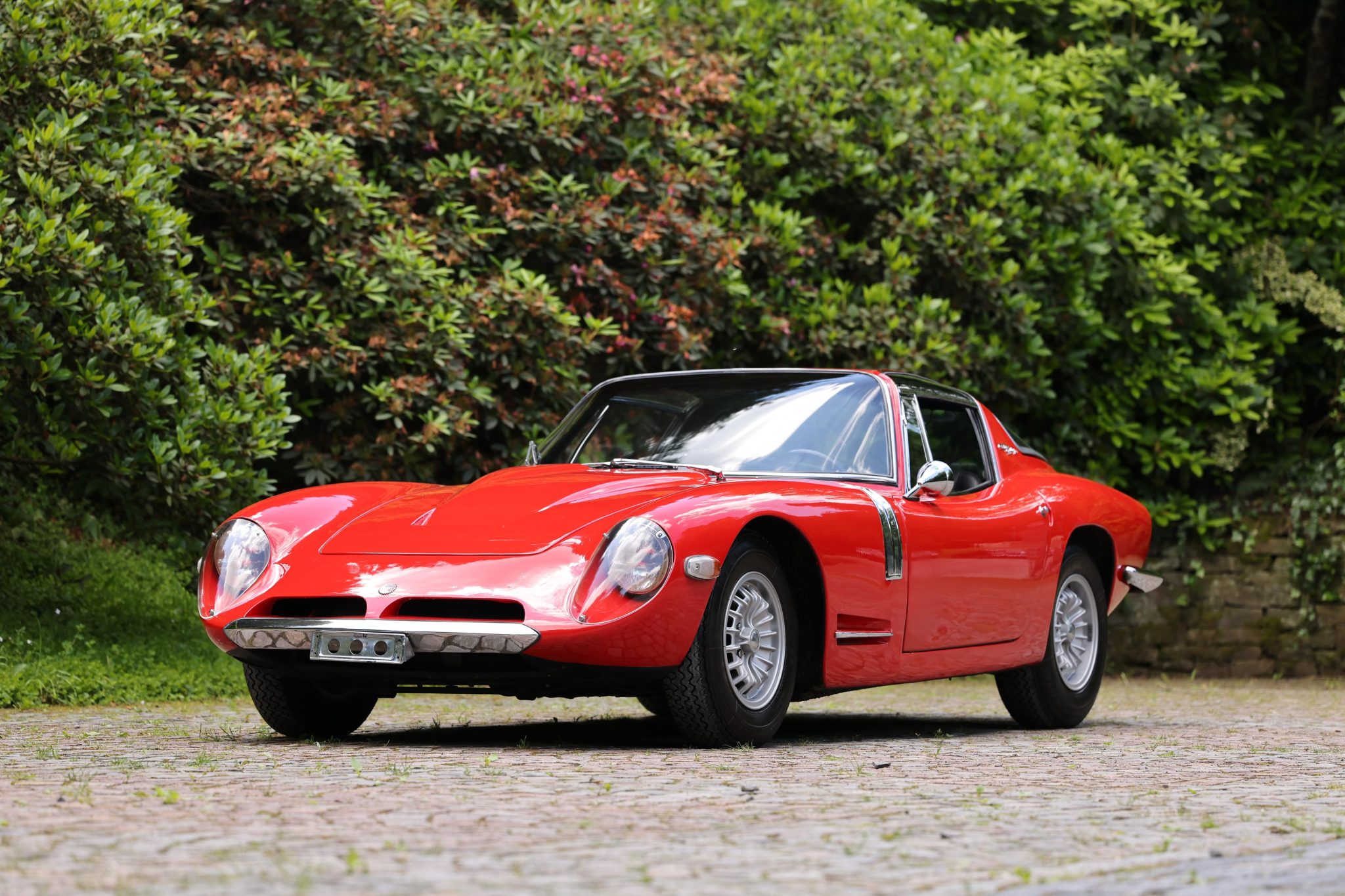This 1971 Bizzarrini 1900 GT Europa is one of approximately a dozen examples produced between 1966 and the Livorno automaker’s dissolution and is said to have left the factory in 1971 before being first registered in Italy in 1974. Chassis 505 was purchased by its current owner in Padua, Italy, in 1994 and is said to have remained in storage through much of the subsequent 30 years. Featuring fiberglass bodywork finished in red, the car is powered by a 1.9-liter Opel OHV inline-four that breathes through twin Weber carburetors and is mated to a four-speed manual gearbox. Additional features include a limited-slip differential, servo-assisted four-wheel disc brakes with inboard-mounted rear units, four-wheel independent suspension with coilover shock absorbers, staggered-width 13” Campagnolo magnesium wheels, and black vinyl interior upholstery. This 1900 GT is now offered by the seller, a BaT Local Partner, in the Netherlands on behalf of the owner with an Automobile Club d’Italia certificate and German Oldtimer registration.
The 1900 GT Europa debuted at the 1966 Turin Motor Show as a smaller and more-affordable alternative to Bizzarrini’s flagship 5300 GT Strada, and it shared the latter’s platform chassis layout. Evoking the larger model’s design, Pietro Vanni-styled fiberglass bodywork featured a fastback profile with faired-in headlights, a panoramic windshield, multi-element side windows with upper panes following the roof contour, and a lift-up glass rear hatch.

This example is finished in red, and areas of cracking around the headlights and hood are shown up close in the photo gallery below. Features include horizontal and vertical front fender vents, orange and white front side markers, a bullet-style driver-side mirror, and over-under dual exhaust outlets.

Campagnolo magnesium wheels are finished in silver and are wrapped in Michelin XAS FF tires measuring 165HR13 up front and 185HR13 at the rear. A matching spare housed in the rear compartment wears 165HR13 Michelin rubber. Stopping is handled by servo-assisted disc brakes with dual master cylinders and inboard-mounted rear units.

The cabin is trimmed in black vinyl over fixed-back bucket seats with matching upholstery over the door panels, console, and dash. Additional features include color-keyed carpeting, a black fluted headliner, shoulder belts, roll-up windows, a console-mounted ashtray, and a dash-mounted rearview mirror. A tear in the upholstery on the driver’s seat can be viewed in the gallery, as can a lifted corner of the upper dash.

The three-spoke steering wheel sits ahead of Veglia Borletti gauges monitoring coolant temperature, oil pressure, oil temperature, and fuel level, while instrumentation to the driver’s right includes a 7k-rpm tachometer and a 240-km/h speedometer. The five-digit odometer shows 3,900 kilometers (~2,400 miles), approximately 1k of which have been added under current ownership.

The 1.9-liter Opel inline-four features overhead valves and breathes through twin Weber 40 DCOE carburetors with curved air horns. Output was factory rated at 110 horsepower. A mechanical check is said to have been performed in 2022.

Power is sent to the rear wheels via a four-speed manual gearbox and a limited-slip differential. Suspension incorporates double wishbones with coilover shock absorbers all around and an anti-roll bar up front.

The car’s ACI certificate lists a built date in 1971 and an initial registration date in Italy in 1974. The car was featured in a 1987 issue of Italian magazine AutoCapital.
The vehicle is being sold on its German registration. The sale does not include a title, as the vehicle is registered in a country that does not issue titles for vehicles.
This car is scheduled to be on display in the BaT event area at the Zandvoort Historic Grand Prix in the Netherlands June 21-23.
You are not connected to real-time updates. Attempting to connect.
Your real-time updates could not be connected. Missed updates will be sent once your connection has been reestablished.
Your real-time updates could not be connected. Missed updates will be sent once your connection has been reestablished.
Your real-time updates could not be connected. Missed updates will be sent once your connection has been reestablished.
